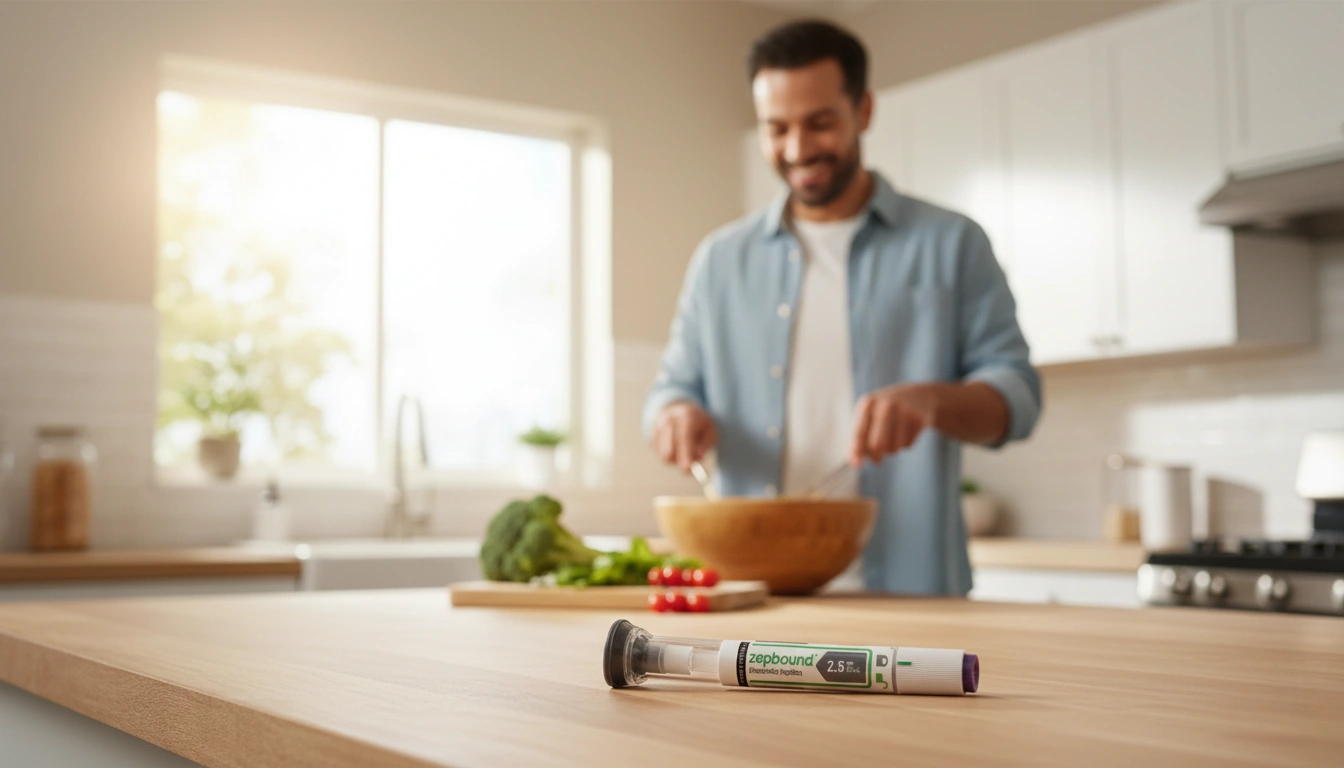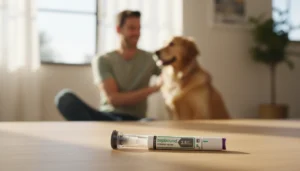Understanding How Many Doses Are in a Zepbound Pen

When it comes to managing weight and improving health, options like Zepbound (tirzepatide) have garnered significant attention. With its promising results in clinical trials, many individuals are eager to learn about its proper use, including how many doses are available in each Zepbound pen. In this article, we will delve into the specifics of Zepbound, including its dosing regimen, how it works, and what you can expect from this innovative medication.
Introduction
Weight management is a critical component of overall health, especially in the face of rising obesity rates. According to the Centers for Disease Control and Prevention (CDC), the prevalence of obesity in the United States has increased dramatically over the past few decades, making effective weight-loss solutions more important than ever. Zepbound, an FDA-approved medication, is designed to assist adults struggling with obesity or weight-related issues.
But how does Zepbound work, and what are the specifics regarding its dosing? By the end of this post, you'll have a clear understanding of how many doses are in a Zepbound pen, the recommended dosing schedule, and best practices for using this medication effectively.
What You'll Learn
- The number of doses in a Zepbound pen.
- Recommended dosages and administration guidelines.
- How Zepbound contributes to weight management.
- Key considerations for safe and effective use.
Together, we will explore Zepbound’s role in weight management and empower you with the knowledge needed to make informed decisions about your health.
How Many Doses Are in a Zepbound Pen?
Zepbound is available in a pre-filled pen format, which is designed for ease of use. Each Zepbound pen contains a specific volume of medication, typically 0.5 mL, and comes in various strengths: 2.5 mg, 5 mg, 7.5 mg, 10 mg, 12.5 mg, and 15 mg.
Dosing Breakdown
- Starting Dose: Most patients begin with a dose of 2.5 mg, which is intended for initiation of therapy.
- Weekly Injections: Zepbound is administered once per week, and the pen is designed to deliver a single dose per injection.
- Total Doses: Depending on the strength, a single pen typically provides one complete dose for the intended week. For example, if a patient is prescribed the 5 mg strength, the pen will contain enough solution to deliver that 5 mg dose once.
Dosage Escalation
After the initial four weeks on the 2.5 mg dose, the prescribing physician may recommend increasing the dosage, typically to 5 mg. The increase can continue in 2.5 mg increments based on the individual's response and tolerance, up to a maximum of 15 mg once weekly. Therefore, each pen offers flexibility in dosing based on individual needs.
Important Note on Dosing
It is crucial to follow your healthcare provider's instructions for dosing to ensure safety and efficacy. Never attempt to adjust your dose without consulting your provider.
Understanding Zepbound and Its Mechanism
Zepbound is classified as a dual GIP and GLP-1 receptor agonist, which means it mimics the action of two hormones that play significant roles in regulating appetite and blood sugar levels. By activating these receptors, Zepbound helps to:
- Reduce Appetite: Patients often report feeling fuller after meals, which can lead to a reduction in caloric intake.
- Improve Blood Sugar Control: This is particularly beneficial for individuals with weight-related health issues, including type 2 diabetes.
The effectiveness of Zepbound in promoting weight loss has been supported by clinical trials, where participants experienced significant reductions in body weight when combined with lifestyle modifications, such as dietary changes and increased physical activity.
Administration Guidelines for Zepbound
Understanding how to properly administer Zepbound is key to maximizing its benefits. Here are the essential steps for using the Zepbound pen effectively:
Preparing for the Injection
- Store Properly: Keep Zepbound in a refrigerator between 36°F and 46°F (2°C to 8°C). It can be stored at room temperature (up to 86°F or 30°C) for 21 days if necessary.
- Check the Pen: Before each use, inspect the pen for any damage and ensure it has not expired.
Injection Process
- Choose an Injection Site: Zepbound can be injected subcutaneously into the abdomen, thigh, or upper arm. Rotate the injection site each week to avoid irritation.
- Clean the Area: Use an alcohol swab to clean the injection site before administration.
- Inject the Medication: Follow the instructions provided with the pen for proper injection technique, ensuring the medication is delivered efficiently.
After the Injection
- Dispose of the used pen in a sharps container to prevent any injuries.
- Monitor for any side effects, which may include gastrointestinal symptoms such as nausea or diarrhea, especially when starting treatment or increasing the dosage.
Tips for Maximizing the Effectiveness of Zepbound
To enhance the outcomes of your weight management journey with Zepbound, consider the following strategies:
- Adopt a Healthy Diet: A reduced-calorie diet is essential for maximizing the effectiveness of Zepbound. Focus on whole foods, including vegetables, fruits, lean proteins, and whole grains.
- Increase Physical Activity: Regular exercise can help to amplify the weight loss effects of Zepbound and improve overall health.
- Stay Hydrated: Drinking enough water is critical, especially if you experience gastrointestinal side effects.
Conclusion
Zepbound presents a promising option for individuals seeking to manage their weight effectively. Understanding how many doses are in a Zepbound pen is crucial for proper administration and achieving optimal results. Each pen typically contains a single dose of medication designed to be used once weekly, with the potential for dose adjustments based on individual responses.
As with any medication, working closely with your healthcare provider is essential. They can guide you through the process, including determining the appropriate dosage and monitoring your progress. Embracing this partnership in health can empower you to take meaningful steps toward achieving your weight loss goals.
FAQ
How many doses are in a Zepbound pen for weight loss treatment?
Each Zepbound pen contains exactly one dose, with understanding how many doses are in a Zepbound pen being essential since these are single-use devices for weekly injections. TrimRx clarifies that understanding how many doses are in a Zepbound pen prevents confusion, as each pen provides one complete dose regardless of the strength you’re prescribed for weight loss.
Can I get multiple doses from one Zepbound pen if I use smaller amounts?
You cannot get multiple doses from a Zepbound pen because the device is designed as single-use, with understanding how many doses limits preventing improper medication splitting. TrimRx emphasizes that understanding how many doses are in a Zepbound pen—always one—ensures patients don’t attempt to extract partial doses, which compromises sterility and dosing accuracy.
Why does each Zepbound pen only have one dose instead of multiple?
Zepbound pens contain one dose to ensure accuracy, safety, and sterility, with understanding how many doses are in a Zepbound pen revealing this design prevents dosing errors. TrimRx explains that understanding how many doses are in a Zepbound pen involves recognizing single-use design eliminates calculation mistakes and contamination risks associated with multi-dose vials.
How many Zepbound pens do I need for a month of treatment?
You need four Zepbound pens monthly for weekly dosing, with understanding how many doses are in a Zepbound pen showing one pen equals one week of treatment. TrimRx helps patients calculate that understanding how many doses are in a Zepbound pen means ordering four pens monthly ensures uninterrupted weekly dose administration throughout treatment.
Is understanding how many doses are in a Zepbound pen different from compounded tirzepatide vials?
Yes, understanding how many doses are in a Zepbound pen differs significantly from compounded vials, which contain multiple doses that you measure yourself with syringes. TrimRx compares understanding how many doses are in a Zepbound pen versus vials, explaining that Zepbound pens provide one pre-measured dose while compounded options require dose calculation and drawing.
Does the dosage strength affect how many doses are in a Zepbound pen?
The dosage strength doesn’t change how many doses are in a Zepbound pen—all strengths from 2.5 mg to 15 mg contain exactly one single dose. TrimRx clarifies that understanding how many doses are in a Zepbound pen remains constant regardless of prescribed strength, with each pen delivering one complete weekly injection.
What happens if I try to use a Zepbound pen for more than one dose?
Attempting to use a Zepbound pen for more than one dose is impossible and dangerous, with understanding how many doses are in a Zepbound pen preventing unsafe practices. TrimRx warns that understanding how many doses are in a Zepbound pen—only one—protects against contamination risks and ensures you receive the full prescribed dose each week.
How does understanding how many doses are in a Zepbound pen help with medication planning?
Understanding how many doses are in a Zepbound pen helps with medication planning by clarifying you need one new pen weekly, simplifying refill scheduling and treatment adherence. TrimRx uses understanding of how many doses are in a Zepbound pen to help patients plan prescriptions, ensuring they have adequate supply with one pen equaling one dose.
Can I save leftover medication if I don’t use the full Zepbound pen dose?
You cannot save medication from a Zepbound pen since understanding how many doses are in a Zepbound pen reveals the device delivers the complete single dose automatically. TrimRx emphasizes that understanding how many doses are in a Zepbound pen means each injection administers the full amount, with no leftover medication remaining in the device.
Why is it important to understand how many doses are in a Zepbound pen before starting treatment?
Understanding how many doses are in a Zepbound pen before starting prevents medication shortages and ensures proper budgeting with one pen needed weekly for treatment. TrimRx stresses that understanding how many doses are in a Zepbound pen—exactly one per device—helps patients prepare financially and logistically for ongoing weekly dose requirements throughout therapy.
Can I reuse a Zepbound pen after the dose is delivered?
Zepbound pens cannot and should never be reused after delivering the single dose, as they’re designed for one-time use only. The device locks after injection completion, preventing any further medication delivery and ensuring safe disposal after each weekly use.
How do I know when a Zepbound pen is empty after my dose?
The Zepbound pen provides clear visual and mechanical indicators when the dose is completely delivered, including a change in the plunger position. Following the complete injection process ensures you’ve received the full dose before disposing of the device properly.
Are there any Zepbound pen options that contain multiple doses?
No, all Zepbound pens are manufactured as single-dose devices regardless of strength or formulation available. This standardized design across all dosage levels ensures consistent, safe administration without the complexity of multi-dose calculations.
What’s the advantage of single-dose Zepbound pens over multi-dose vials?
Single-dose pens eliminate dosing errors, reduce contamination risks, improve convenience, and don’t require measuring skills or additional supplies. The pre-filled design ensures accurate dosing every time without calculations, syringes, or concerns about proper measurement technique.
How should I store unused Zepbound pens before using them?
Store unused Zepbound pens in the refrigerator at 36-46°F until needed for your weekly injection, keeping them in original packaging. Remove the pen 30 minutes before injection to allow it to reach room temperature for more comfortable administration.
For personalized weight loss solutions and to see if you qualify for our prescription medications, consider taking our free assessment quiz at TrimRx. You can also explore our quick-access supplements, like GLP-1 Daily Support and Weight Loss Boost, to enhance your weight loss journey further. Together, we can work towards achieving your health and wellness goals.

Transforming Lives, One Step at a Time
Keep reading
Navigating Your Path: How Many Doses Are In Zepbound and What It Means for Your Health Journey
Curious how many doses are in Zepbound? Discover its weekly dosing schedule, available strengths, and titration process for effective weight loss. Learn more!
Navigating Your Zepbound Journey: Understanding Dosing and Expert Guidance
Wondering how to split doses of Zepbound? Learn why it’s unsafe & not recommended. Get expert guidance on Zepbound dosing for safe, effective weight loss with TrimRx. Click to learn more!
Understanding Zepbound Dosing: What is the Lowest Dose Available for Your Weight Loss Journey?
Curious what is the lowest dose of Zepbound available? Learn about Zepbound’s 2.5mg starting dose, titration, and safe use for weight loss. Get expert guidance!



